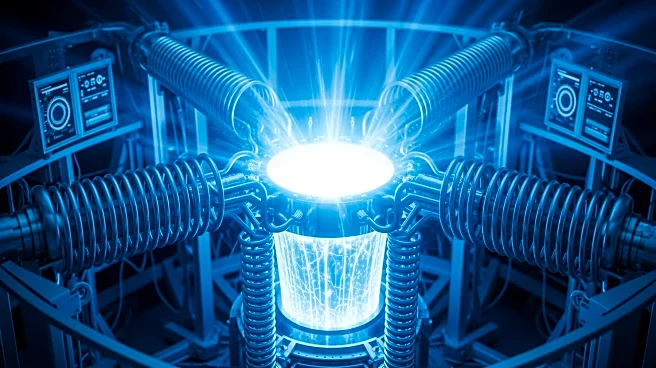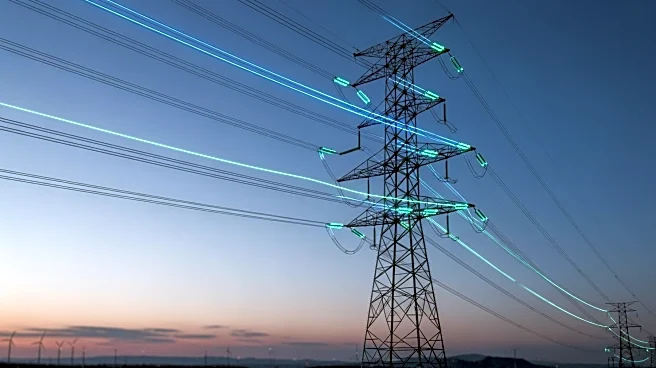What's Happening?
Zap Energy has reached a significant milestone with its Fusion Z-pinch Experiment 3, known as FuZE-3, by generating plasmas with electron pressures up to 830 megapascals (MPa) and a total pressure of 1.6 gigapascals (GPa). This achievement marks the highest
pressure ever recorded in a sheared-flow-stabilized Z pinch, representing a crucial step toward achieving scientific energy gain, or Q>1. FuZE-3 is the first system from Zap to use a third electrode, allowing independent control of plasma acceleration and compression. The device's performance was shared at the American Physical Society's Division of Plasma Physics meeting in Long Beach, California. The experiment aims to balance strong compression with sustained confinement, crucial for producing energy from fusion.
Why It's Important?
The achievement of high pressure in fusion experiments is vital for advancing fusion energy technology, which promises a clean and virtually limitless energy source. Higher pressure allows more fusion reactions to occur, potentially leading to energy gain. Zap Energy's approach, which combines strong compression with sustained confinement, could offer a more efficient path to commercial fusion energy. This development is significant for the U.S. energy sector, as it could reduce reliance on fossil fuels and contribute to energy security. The success of FuZE-3 also highlights the potential for smaller, cost-effective fusion systems, which could accelerate the commercialization of fusion technology.
What's Next?
Zap Energy plans to continue testing FuZE-3 while preparing to bring another next-generation FuZE device online this winter. The company is also working on future power plant systems supported by the Century demonstration platform. As Zap Energy integrates lessons from FuZE-3 into new systems, the focus will be on achieving higher fusion performance and advancing toward commercial fusion. The ongoing experimental campaigns and upcoming publications in scientific journals will provide further insights into the potential of Zap's fusion technology.
















